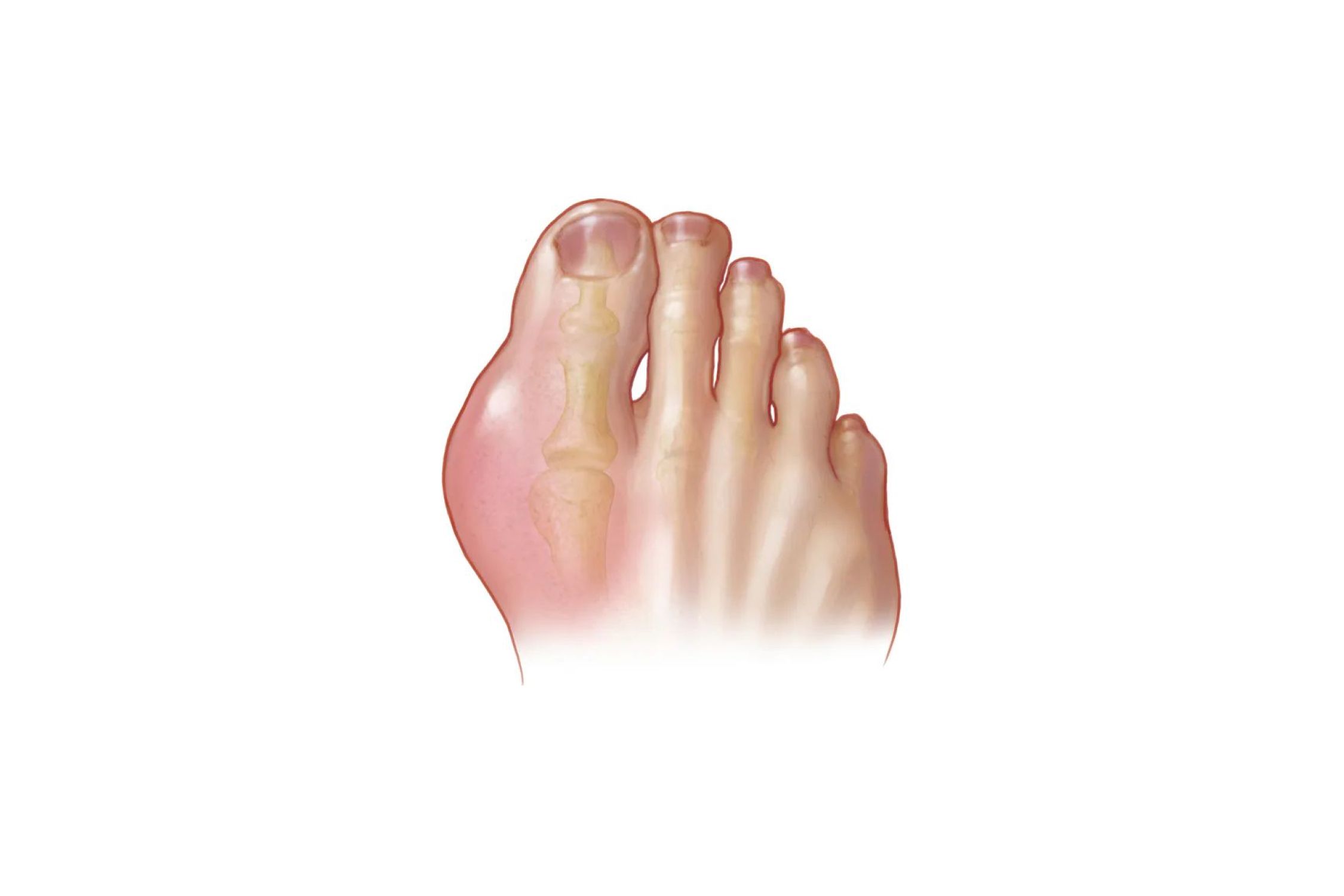What is gout?
Gout is a form of inflammatory arthritis which causes a painful swelling in the joints. Gout is characterised by sudden attacks of pain, swelling and and redness in the joints, most commonly the big toe. However, gout can also affect the joints of the hands, feet, wrists, knees, elbows and ankles. Symptoms usually come and go sporadically and can last up to two weeks at a time. This onset is often referred to as an attack or flare-up. For some, the affected joint can become so tender to the touch that even the weight of a bed sheet can cause excruciating pain.
What are the symptoms?
Gout symptoms vary but most sufferers experience the following.
- Sharp pain in affected joint
- Reddening of the skin
- Swelling and inflammation
- Extreme sensitivity to the touch
- Stiffness and limited mobility
- Burning sensation

What causes gout?
Gout is caused by a build-up of uric acid in the body. Uric acid is a natural by-product formed when the body breaks down chemicals called purines, which are found in some of the foods we eat. It’s normal to have a certain amount of uric acid, which is filtered out by the kidneys and expelled in urine in healthy people. However, sometimes the body produces too much uric acid or the kidneys fail to filter it out of the bloodstream quickly enough, which can lead to the formation of uric acid crystals, usually in the joints. These crystals can build up, eventually causing severe and sudden pain and other symptoms.
Who is susceptible to gout?
Although gout can affect anyone, it is much more common in men and older people. In fact, men are three times as likely as women to develop gout. And among women, gout usually only develops after the onset of the menopause. Gout is also more common in people with diabetes, coronary issues, high blood pressure and kidney conditions.
Can gout be cured?
Unfortunately, there is no cure for gout. However, with proper management, most people are able to successfully maintain lower levels of uric acid, thereby limiting the number of attacks they experience. Flare-ups can be prevented by drinking plenty of water and avoiding foods rich in purines, such as red meat, seafood, sugary drinks and alcohol. Additionally, taking regular exercise and maintaining a healthy weight will both help to reduce the dress on joints.
How is gout diagnosed?
Elevated levels of uric acid in the blood is associated with gout, although it has to be accompanied by symptoms in order for a diagnosis to be made, as some people may have higher uric acid levels but not experience any symptoms of gout. The Newfoundland Gout Test measures the amount of uric acid in the body via a finger-prick blood sample. Results are generated in just 2 minutes with over 98% accuracy, placing the user’s uric acid levels in one of four categories.
How is gout treated and what to look out for?
There is no cure for gout, so treatment usually consists of managing the pain and symptoms during a flare-up and restricting diet and lifestyle to reduce the likelihood of attacks.
Gout attacks usually occur overnight and often very suddenly, meaning sufferers will wake up feeling very severe symptoms having gone to bed feeling absolutely fine. If a gout diagnosis hasn’t been made previously then it is wise to check your uric acid levels and consult your GP.